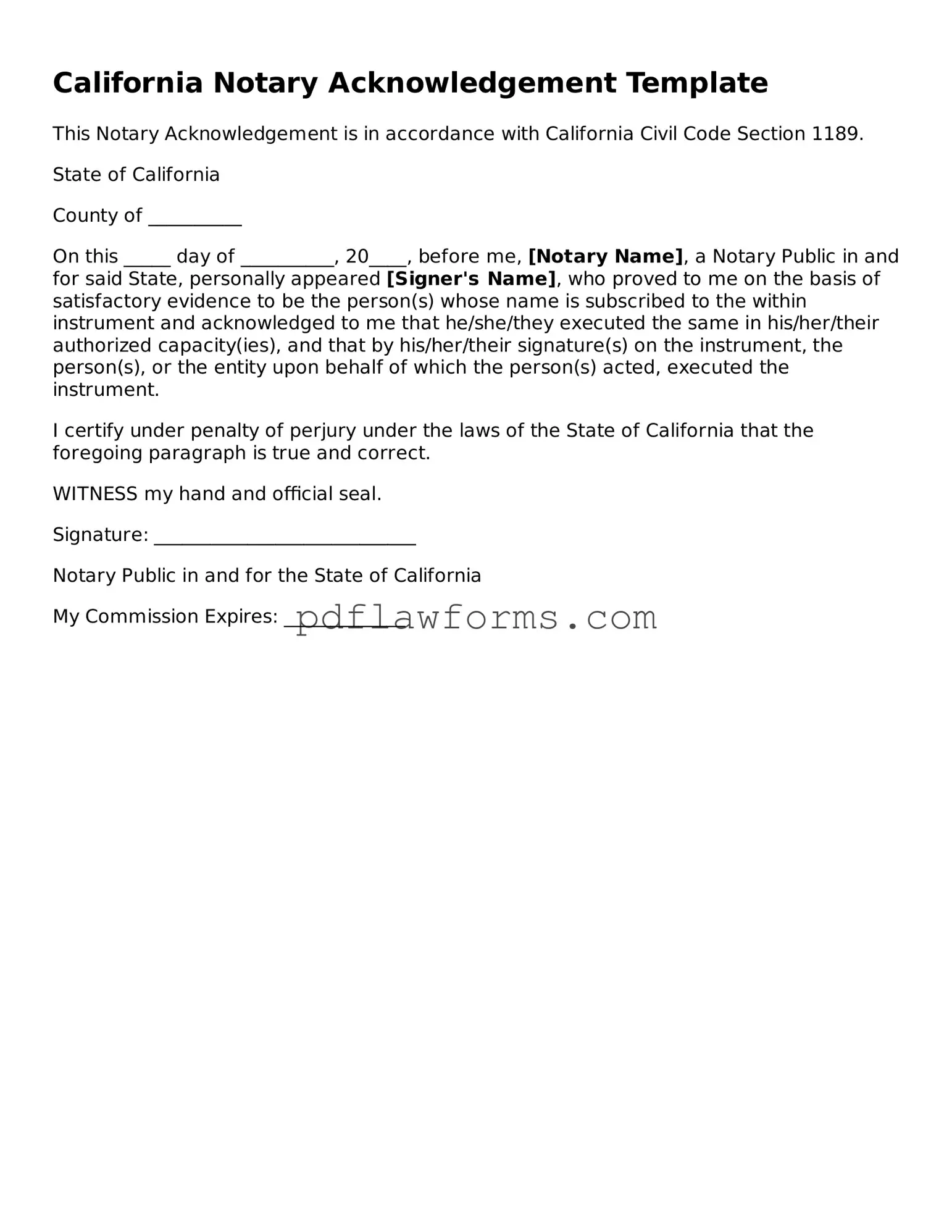Filling out the California Notary Acknowledgement form can be a straightforward process, but several common mistakes can lead to delays or complications. One frequent error is neglecting to include the date of the acknowledgment. Without this crucial information, the document may be deemed incomplete, which can cause issues later on.
Another common mistake is failing to properly identify the signer. The form requires the notary to confirm the identity of the individual signing the document. If the name on the form does not match the identification provided, the acknowledgment may be invalid. It’s essential to ensure that the name is spelled correctly and matches the ID exactly.
In addition, many individuals overlook the requirement for a signature from the notary. It’s not enough to simply stamp the document; the notary must also sign it. This step is critical, as the signature authenticates the acknowledgment and confirms the notary’s role in the process.
Another mistake involves the notary’s seal. The California Notary Acknowledgement form mandates the use of an official seal. If the seal is missing or not clearly visible, the acknowledgment may not be accepted. Always check that the seal is properly affixed and legible.
People often forget to include the correct venue, which is the location where the acknowledgment takes place. This detail is important, as it provides context for the notarization. Leaving this section blank can lead to confusion or rejection of the document.
Additionally, failing to use the appropriate form for the specific type of document can create problems. There are different types of acknowledgments depending on the nature of the document being notarized. Using the wrong form can invalidate the acknowledgment, so it’s crucial to choose the right one.
Lastly, some individuals neglect to double-check for any additional requirements specific to their situation. Certain documents may have unique stipulations that must be met for the acknowledgment to be valid. Taking the time to review these requirements can save a lot of hassle in the long run.
